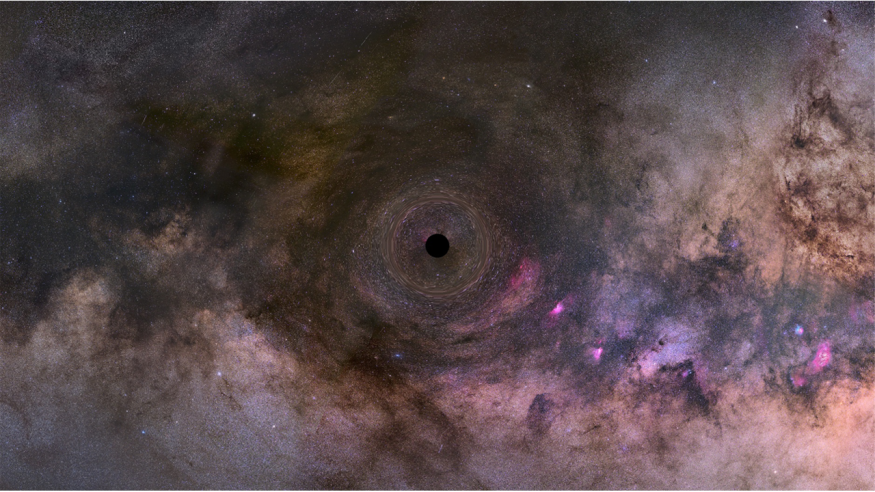A lone black hole gradually hovering throughout the Milky Way might be the smallest one yet in the entire history of astronomy. Scientists conclude that the cosmic anomaly is tiny based on the estimates collected from its mass.
Neutron Star or Black Hole?

The study was made possible through the help of the team from Baltimore's Space Telescope Science Institute. The institute's astronomy specialist Kailash Sahu led investigations over the tiniest black hole, with associated research led by UC Berkeley's Casey Lam.
The black hole was charted 5,000 years away from our planet. Despite its size, the phenomenon was easily identified through its feature called a gravitational lens. The approach works when the black hole appears by itself when a nearby stellar body is present.
In the case of this particular black hole, its gravitational power was observed through the light emitted by a star located 19,000 lightyears away.
The black hole was located by two separate ground-based observation facilities, New Zealand's Mount John University Observatory Microlensing Observations in Astrophysics (MOA) and Chile's Las Campanas Observatory Optical Gravitational Lensing Experiment (OGLE).
To ensure the credibility of their initial findings, Sahu's team conducted a follow-up study using the images captured by the Hubble Space Telescope. They concluded that the mass of the black hole is 7.1 times larger than our sun.
The second team, led by University of California Berkeley's Casey Lam, presented a distinct calculation. According to their readings, the tiny black hole has a mass of 1.6 to 4.4 times greater than our sun.
Searching for Black Holes in the Galaxy
Stellar-mass black holes are theorized to originate from the supernova of stars that measure 20 times larger than Earth's parent star. On the other hand, stars that scale between eight to 20 solar masses result in supernovas that produce a neutron star.
Neutron stars have a maximum average of up to 2.3 solar masses, but stellar-mass black holes have not been detected with five solar masses and below. Therefore, the theories presented in the studies of both Lam and Sahu heavily contradict each other.
In a statement with NASA, Lam explained that despite the uncertainty behind the true nature of this cosmic object, it is the first dark stellar remnant in history that is unaccompanied by a separate star.
The estimated stellar populations in the Milky Way galaxy range from 100 to 200 billion bodies. Within these stars lie only 0.1 percent, with more than 20 solar masses.
Most black holes are identified in binary systems, but some hover in space unnoticed until a nearby bright star highlights their gravitational lens. Upcoming wide-scale research by NASA in 2027 would survey many parts of the Milky Way. Through the help of the Nancy Grace Roman Space Telescope, scientists expect that they will find thousands of microlensing events, most likely black holes.
The research by Sahu's and Lam's team was published in arXiv.
RELATED ARTICLE : ESA's Gaia Can Detect Starquakes, One of the Most Shocking Discoveries Revealed in Newly Released Spectroscopy Data
Check out more news and information on Space in Science Times.
© 2025 ScienceTimes.com All rights reserved. Do not reproduce without permission. The window to the world of Science Times.












